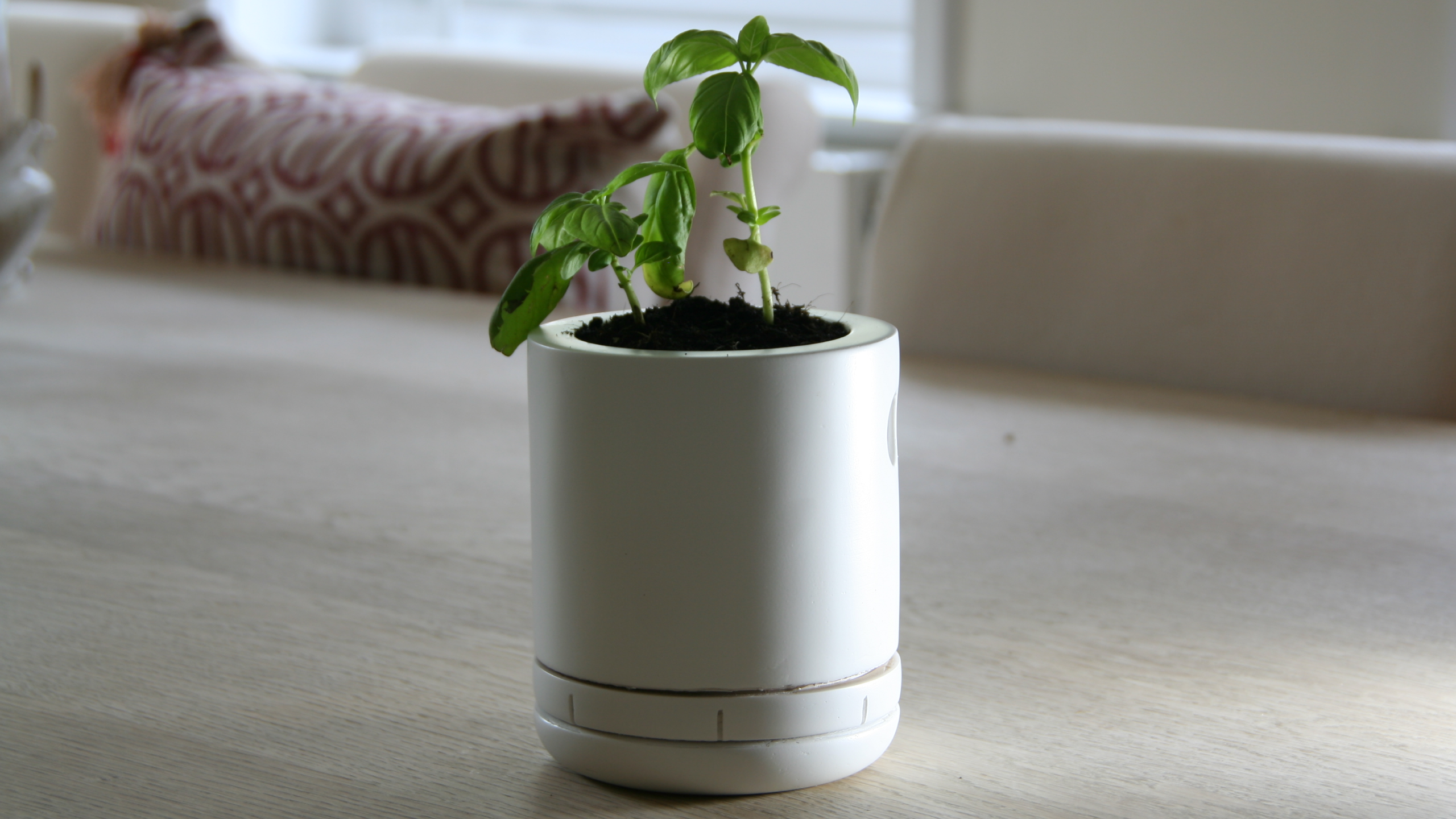Parent Firm Analysis
Company Overview
Since its foundation in 1932, Lego has become a leading toy manufacturer, achieving a revenue of 5.87 billion euros in 2020 [Statista, 2021] and being ranked as the world's most reputable company by RepTrak in 2021 [Global RepTrak® 100, 2021]. The original Lego brick was patented 60 years ago, followed by the creation of the minifigure 20 years later [Lego, 2020]. After the brick's patent expired in 1978 [Been Patent Law, 2021], Lego faced fierce competition from copycats. They countered this by consistently innovating and delivering high-quality products, whether through theme parks, movies, or new sets, thereby instilling confidence in customers regarding the quality of Lego products. This strategy helped solidify Lego's position, as evidenced by its current large market share of 8.05% [EBSCOhost, 2021].
Industry Overview
Lego competes in the highly concentrated physical toy industry, where a few key players dominate the market. This includes Hasbro, Mattel, and Lego. Their high market share drives this concentration, defined by having a share of over 5% [EBSCOhost, 2021]. This puts Lego in a dominant position, able to continuously expand, shown through large levels of increasing revenue, from 0.9 Billion Euros in 2003, to 5.87 Billion in 2020 [Grand View Research, 2021].
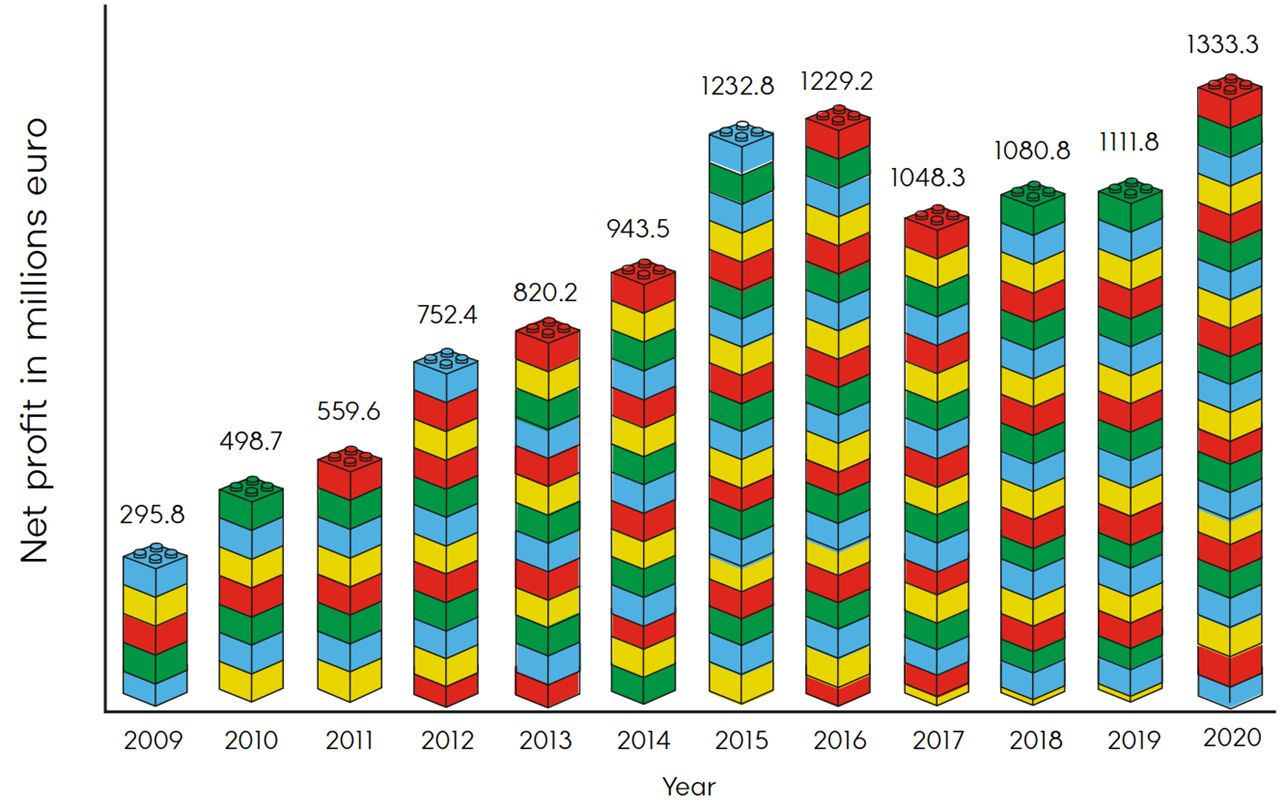 Figure 1. Net profit of the LEGO Group worldwide from 2009-2020 (in million euros) [Statista, 2021]
Figure 1. Net profit of the LEGO Group worldwide from 2009-2020 (in million euros) [Statista, 2021]
The physical games market has seen profit margins fall from 2.1% in 2016, to 1.7% in 2021 [IBISWorld, 2021], attributed to increasing popularity of electronic games. Even throughout this decline, Lego has been successful in achieving their highest net profit in 2020 at 1.3 Billion euros [Statista, 2021], highlighting their dominance. Medium level of barriers to entry benefits Lego. Their reputational advantage, and high capital required to set up production (especially automated methods), makes it difficult for new manufacturers to compete. Key success factors, such as quality control and stock management are areas of strength for Lego. For example, in the case of missing parts, customer service are quick to send replacements. As Lego produce their own products, this also allows for dynamic production rates, varying on demand, e.g. at Christmas. With the physical toy market reaching maturity, and new manufacturers entering, competition levels remain high. With encroaching threats from virtual and online gaming, it is crucial that Lego keep innovating.
Mission & Vision State
Lego's mission statement is to 'Inspire the builders of tomorrow', aiming to prosper children's creativity and evolve imaginations. They also adhere to core values, outlined below. 'Lego' is Danish for 'play well', and they believe in the power of learning whilst having fun. Thus, they envision themselves as 'a global force for learning-through-play'.
 Figure 2. Core values of Lego
Figure 2. Core values of Lego
Brand Strategy
Lego utilises a broad differentiation strategy, having built a business based on unique products, and catering for the whole market; boys, girls, different interests, and all ages. An example of this is their new marketing campaign, 'adults welcome', aiming to attract adults to the toy market. This features mature and engaging advertisements, showing key benefits such as relieving stress. A further example is through their brand collaborations, including Marvel and Star Wars. These allow Lego to captivate all kinds of interests, enhancing their market size.
Product Portfolio
Lego has an ever-expanding portfolio, from traditional sets, to movies, clothing and accessories, which has kept users engaged and willing to repurchase. In 2020, 55% of their portfolio was brand new [Brick Fanatics, 2020], including a range of Super Mario products. These brand collaborations have higher emotional value to fans, increasing Lego's user base, and further diversifying their range.
Blue Ocean Venture
"Lego Bites" revolutionizes how consumers interact with Lego, in both the physical and virtual worlds. The proposed venture introduces edible mini Lego sets, each consisting of 10 tasty bricks. Each packet also contains a redeemable code, allowing the model to be imported into a mobile-based game, "Lego Bites Builder," thus expanding the user's collection.
Lego Bites bricks will be made from a cereal bar interior tailored to the healthy-eating market, coated with a hard exterior, enabling the pieces to fit together in typical Lego fashion. The outer coating will consist of a mix of sugar and corn syrup, similar to M&M's coating, essential for upholding the brick's strength and allowing the coating to be dyed with food coloring to retain the vibrancy of classic Lego.
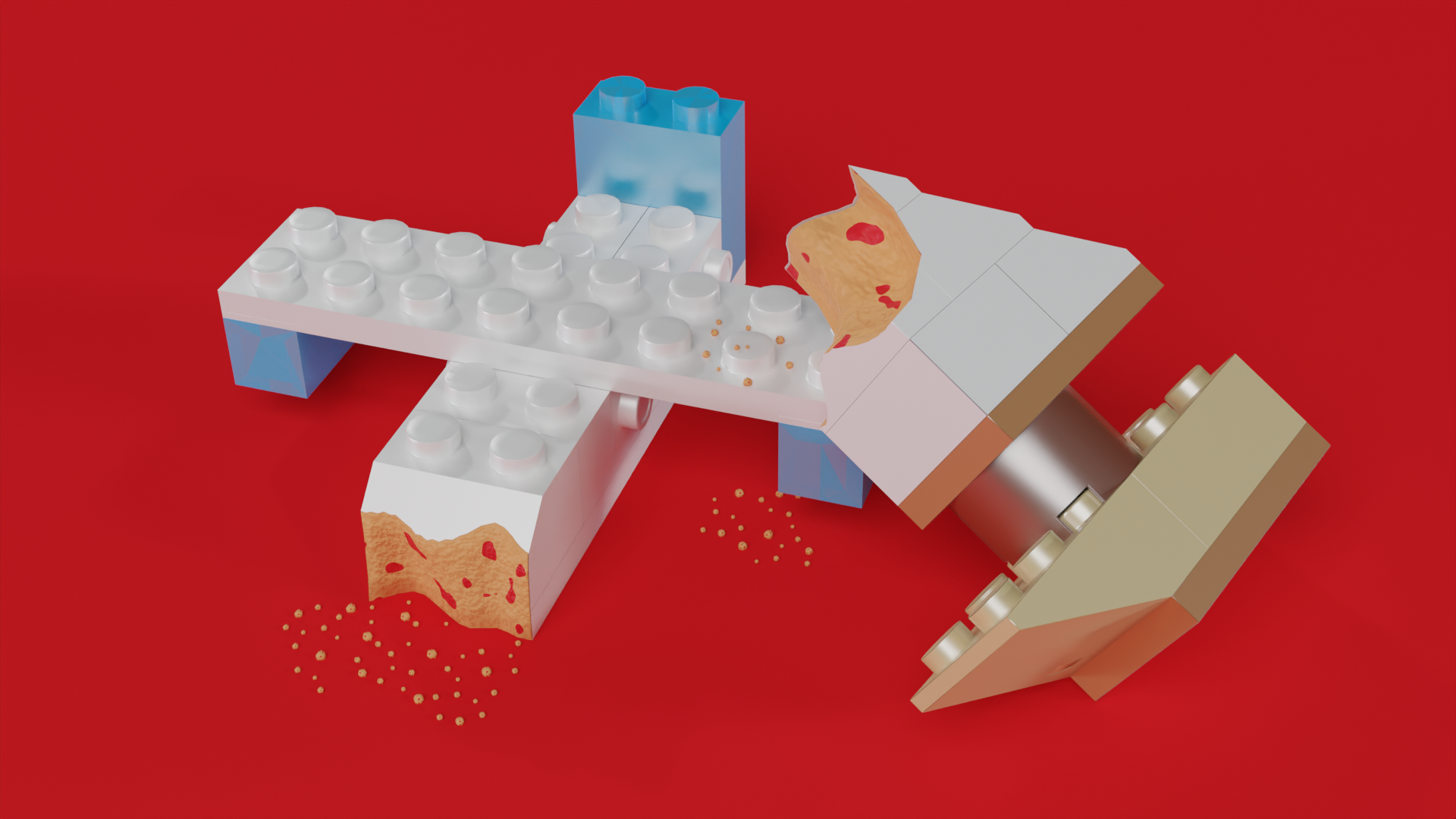 Figure 3. An example of a Lego Bites snack product
Figure 3. An example of a Lego Bites snack product
The supporting mobile game will resemble a city-builder, with users responsible for the city's growth and management strategy, thus enhancing Lego's educational value. Its unique selling proposition lies in replacing in-game micro-transactions with purchases of real-life Bites packets.
Typically, Lego sets sit on shelves after construction, taking up space before being discarded. By introducing edible Lego bricks, both plastic waste and the need for storage space are eliminated. Lego Bites also caters to health-conscious buyers, offering a gamified alternative to encourage healthy eating, thus providing added incentives for parents. Furthermore, this unique snack interaction allows for a higher price point, enhancing profits. Though Lego Bites can stand alone, the mobile game complements it, addressing concerns about repeated play and ensuring a strong connection between the physical and virtual worlds, enhancing the Lego ecosystem and promoting customer loyalty.
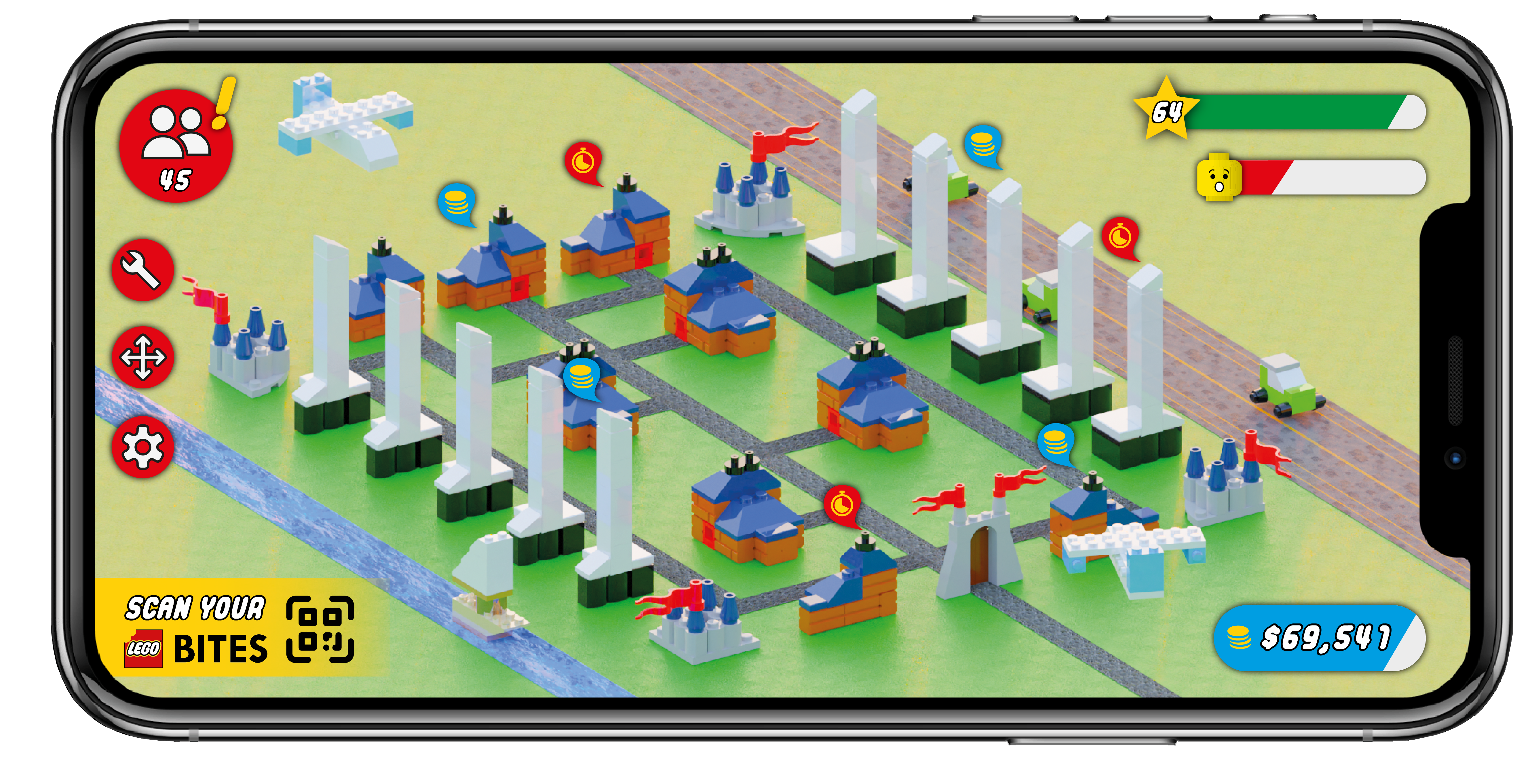 Figure 4. A mockup of the game that the constructed snacks can be 'imported' into
Figure 4. A mockup of the game that the constructed snacks can be 'imported' into
Current trends indicate the need for bold, new innovations, notably the plateau of the physical toy market due to the rise of virtual games [Play Mr, 2020]. Lego Bites opens up a new market - 'gamified snacks,' moving away from head-to-head competition and reinstating Lego's position as market drivers. There is a growing shift towards sustainable purchasing, with over 65% of buyers aiming to limit their use of single-use plastics [Deloitte, 2020]. Reduction of plastic waste was favoured by 1 in 3 surveyed users, indicating readiness for eco-conscious choices. Additionally, there is a growing demand for convenient and healthy snack options [Mordor Intelligence, 2021], with around 30% of surveyed users indicating that the healthy-eating aspect was the most important feature. Lego Bites Builder caters to the digital transformation in the toy industry, ensuring that Lego remains competitive in the video game market and widening its market size.
Lego's key innovation strategy, "Obviously Lego, never seen before," aligns perfectly with Lego Bites, offering new avenues for creativity and fulfilling its vision of "Inventing the future of play." The venture also aligns with Lego's commitment to environmental protection, contributing to its goal of eliminating single-use plastics in all their boxes by 2025 [Lego, 2021].
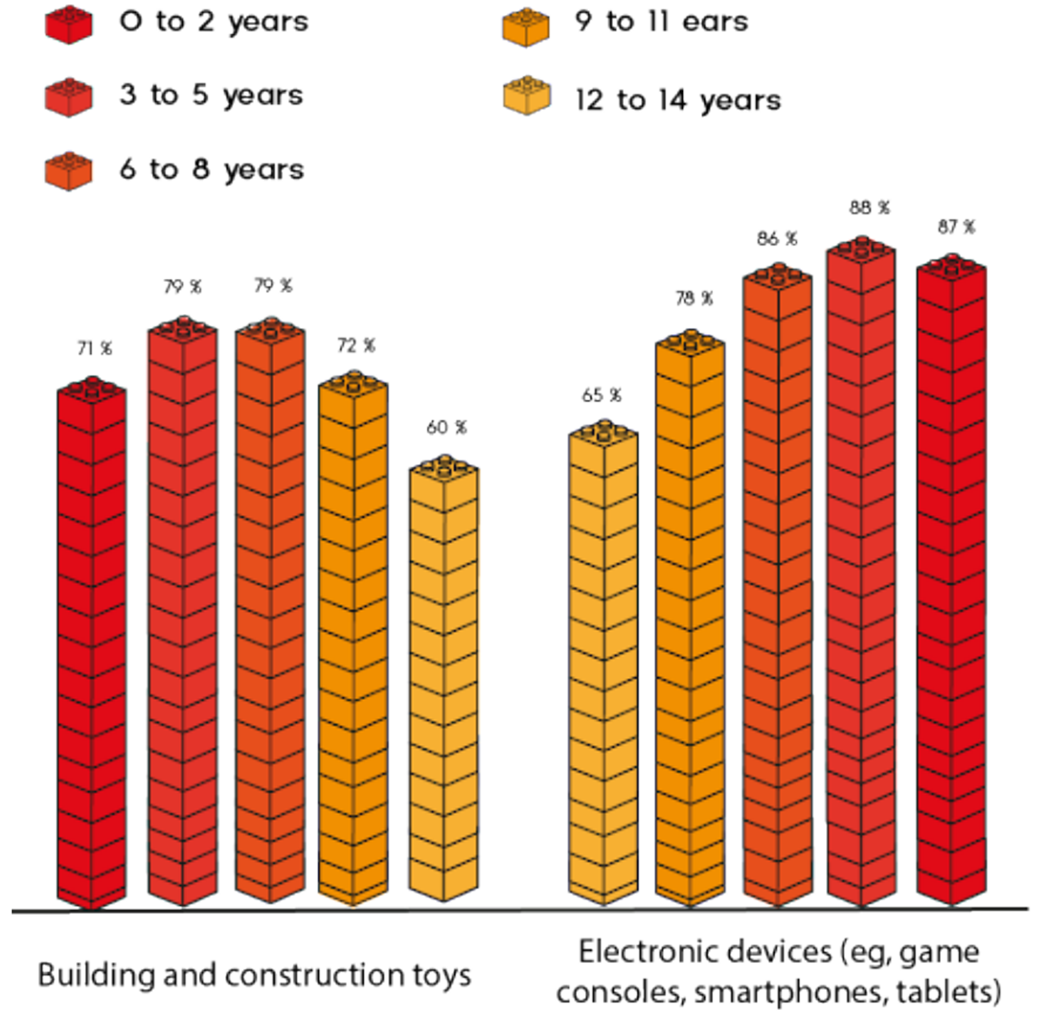 Figure 5. Age distribution graph of toy and electronic device users
Figure 5. Age distribution graph of toy and electronic device users
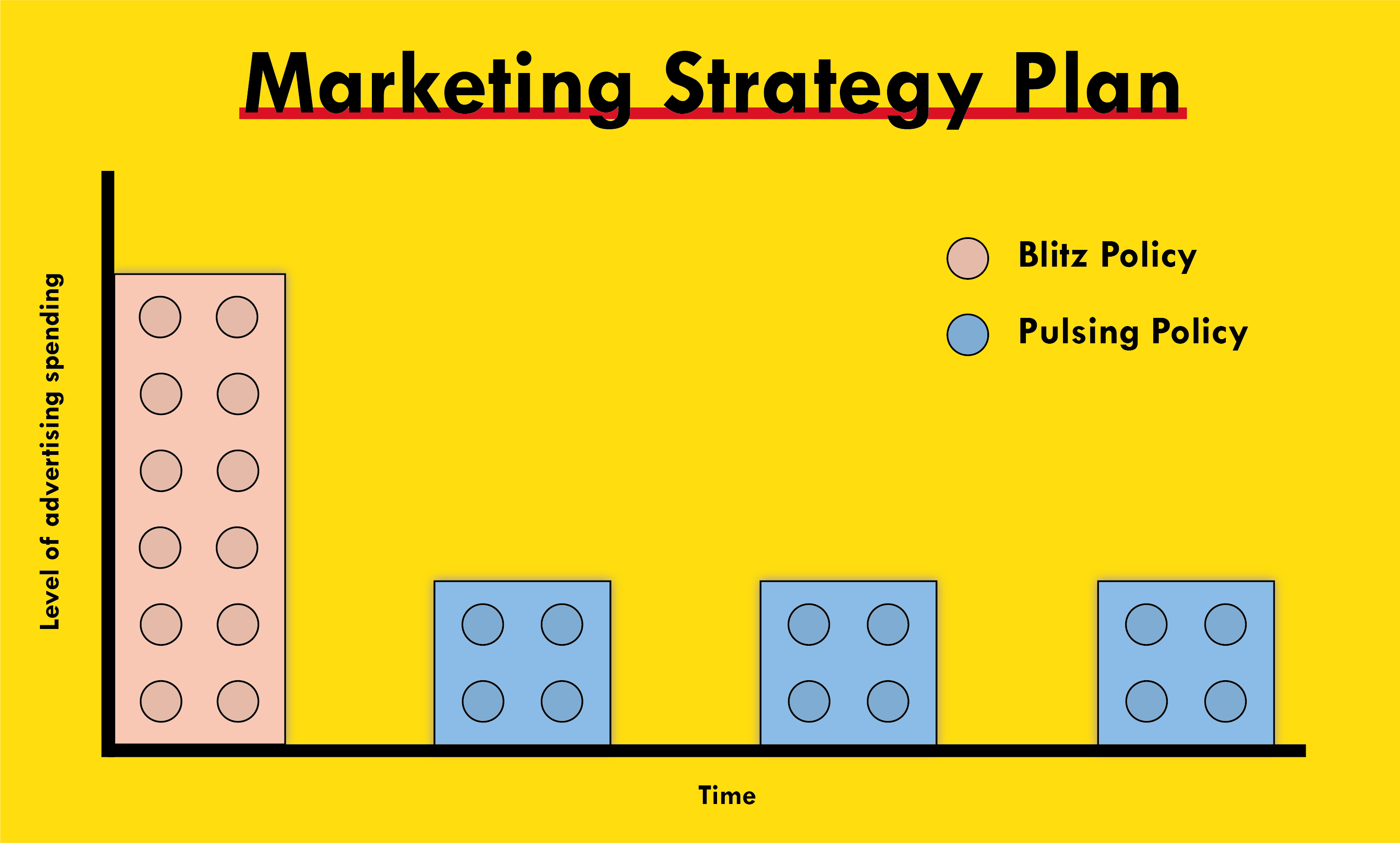 Figure 6. Marketing strategy plan
Figure 6. Marketing strategy plan
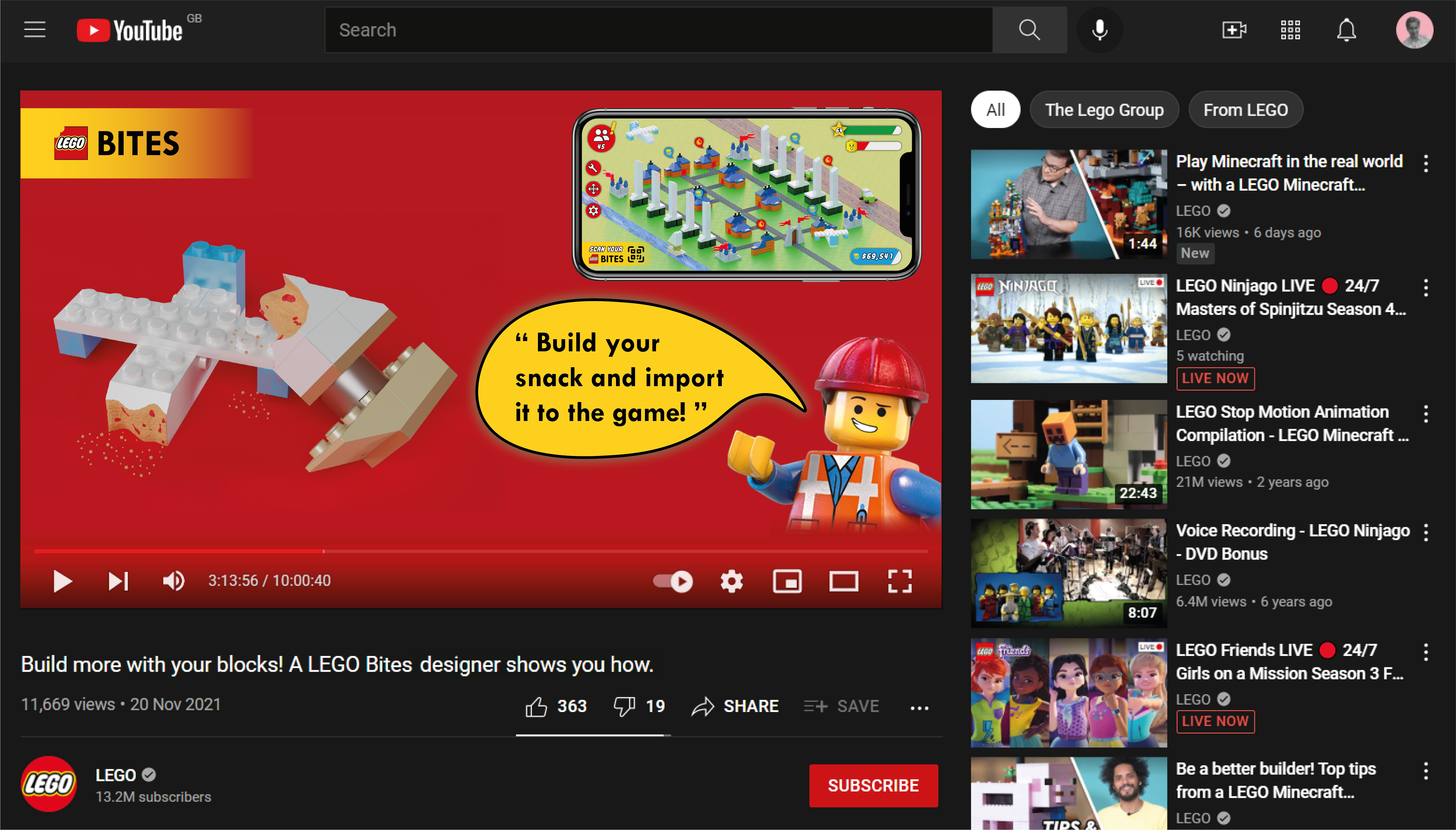 Figure 7. LEGO Bites youtube promotion mockup
Figure 7. LEGO Bites youtube promotion mockup
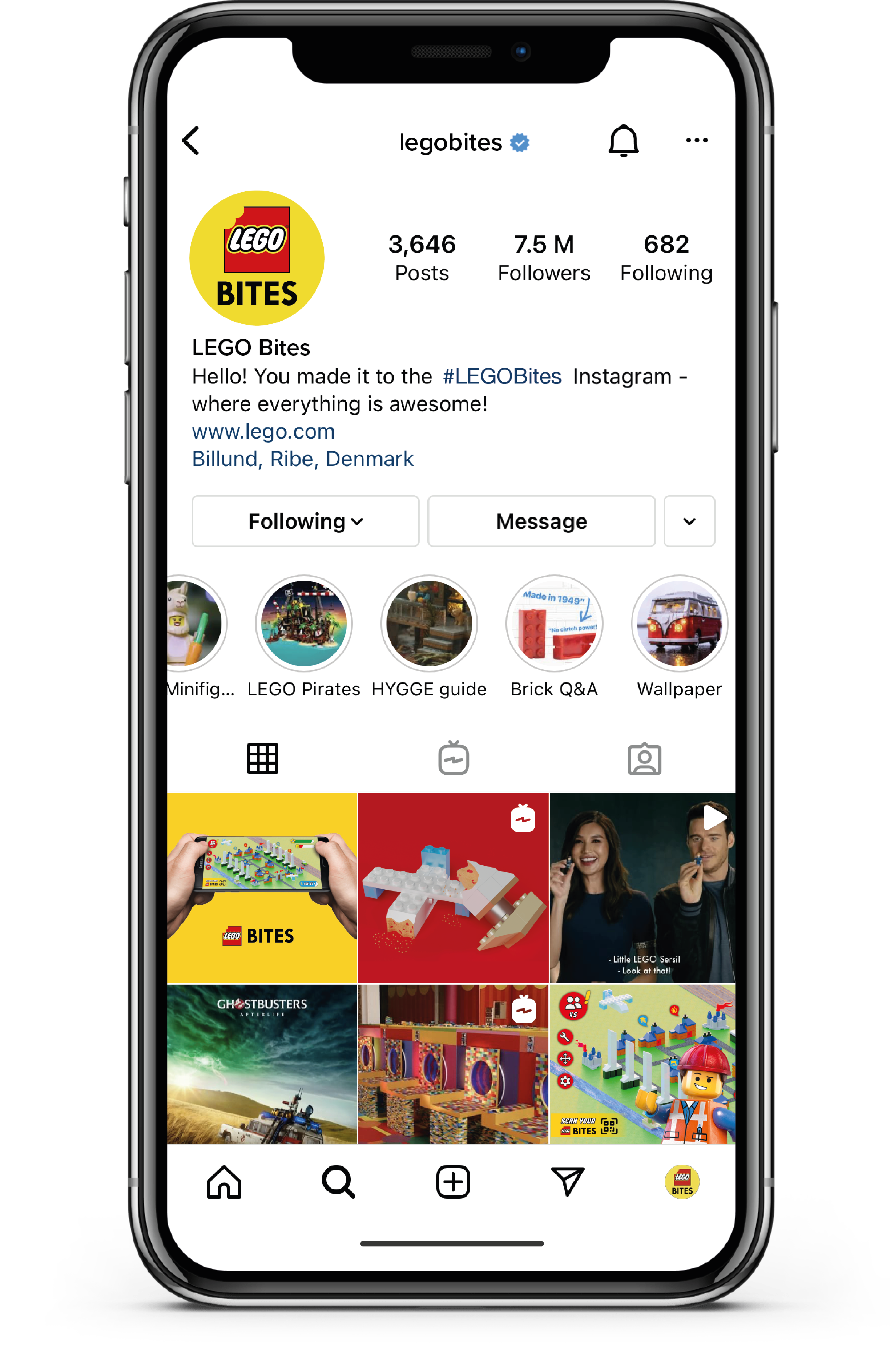 Figure 8. LEGO Bites Instagram mockup
Figure 8. LEGO Bites Instagram mockup
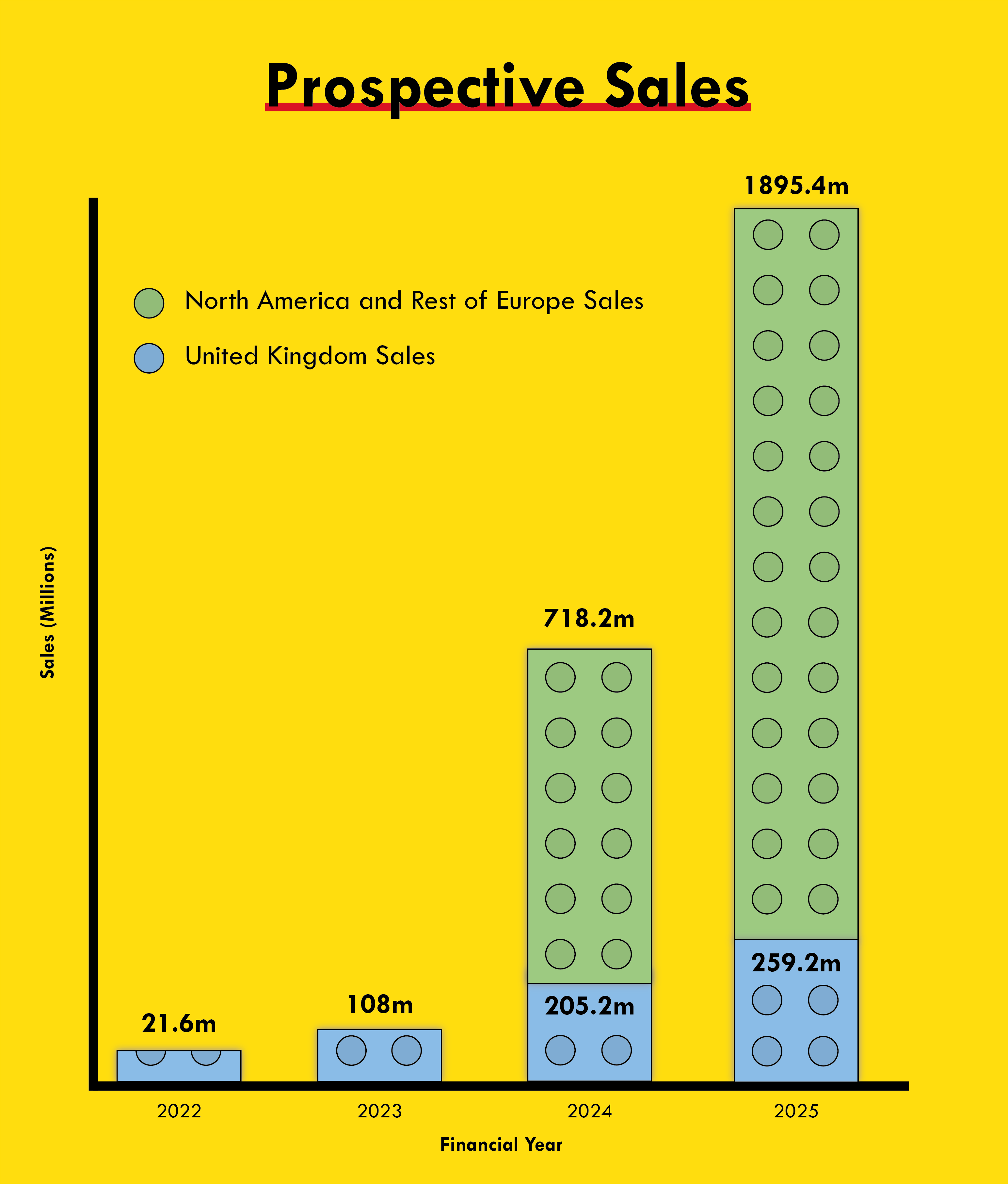 Figure 9. LEGO Bites forecast sales
Figure 9. LEGO Bites forecast sales
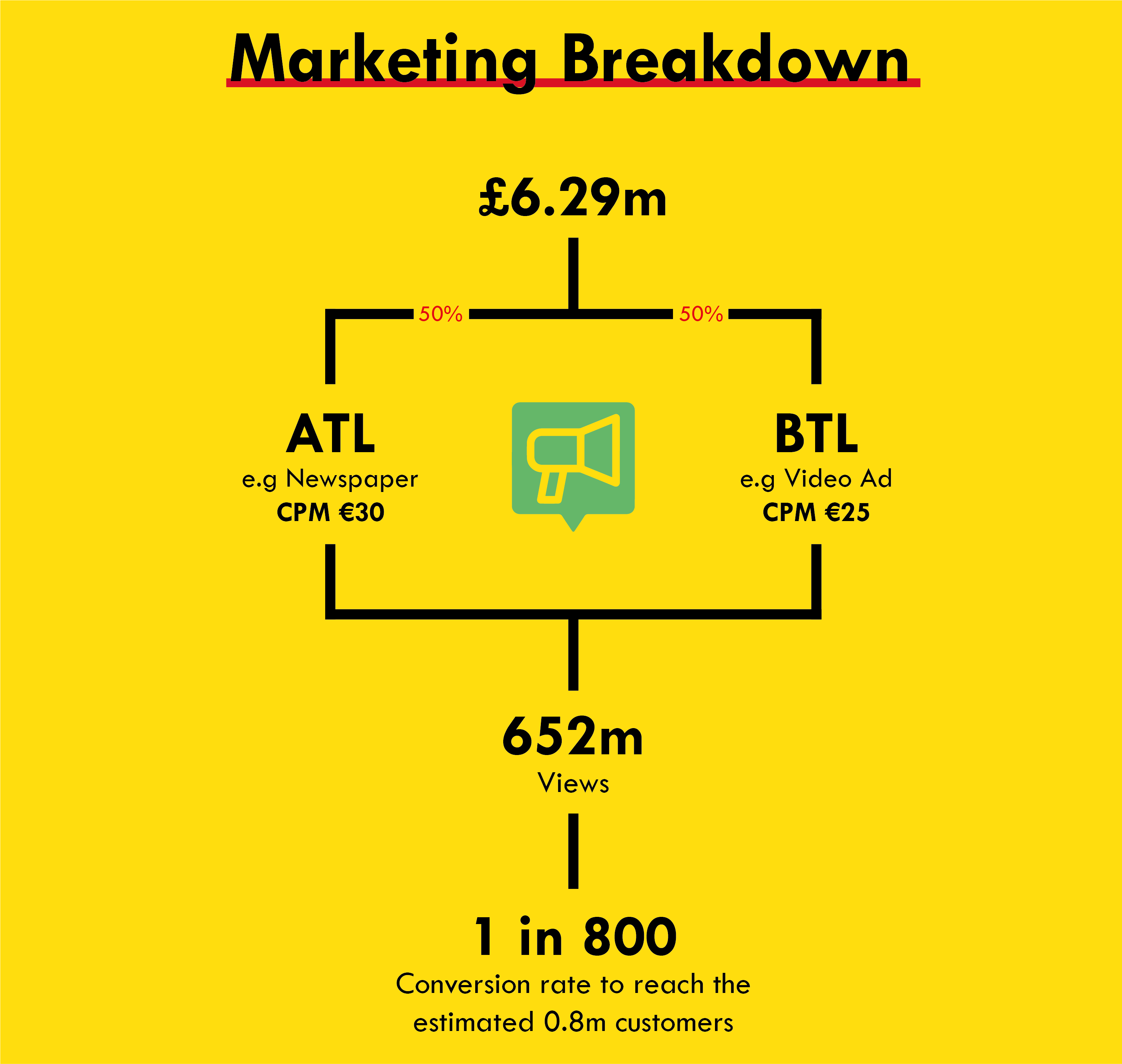 Figure 10. Marketing spend
Figure 10. Marketing spend
 Figure 11. Forecast profit
Figure 11. Forecast profit
